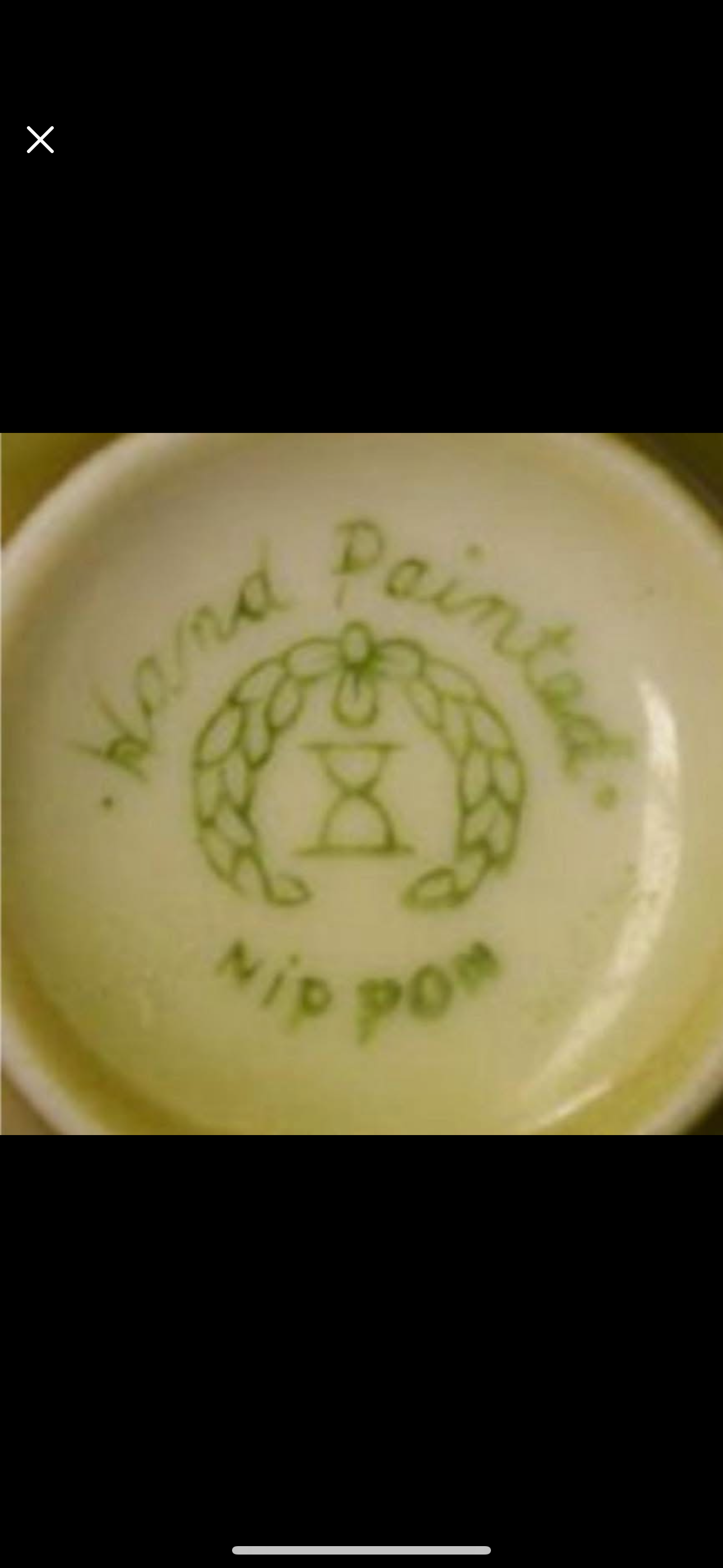Fake vs Real Nippon
Spotting Fake Nippon Marks: How to Tell if Your “Hand Painted Nippon” Porcelain Is a Fake.
📜 Introduction
If you’ve ever turned over a pretty porcelain vase or teacup and found the words “Hand Painted Nippon” beneath a green wreath and hourglass symbol, you might think you’ve discovered a true antique. Sometimes that’s the case — but this is also one of the most copied marks in porcelain history.
At Fine Vintage Treasures, I love helping collectors and vintage lovers learn the difference between authentic Nippon porcelain and the many modern reproductions that have appeared over the decades. Here’s how you can tell them apart.
🏺 The History Behind Nippon Porcelain
“Nippon” simply means Japan. Between 1891 and 1921, U.S. import laws required exported goods to be marked with their country of origin — and Japan used the word Nippon during that time.
The most famous exporter was the Morimura Brothers, who later became Noritake. Their hand-painted Nippon pieces were known for their delicate floral designs, gilded edges, and translucent porcelain that rivaled European makers.
After 1921, the U.S. required imports to say “Japan” instead — which means any genuine Nippon-marked porcelain is over 100 years old.
⚠️ The Rise of Reproductions
Starting in the 1960s and 1970s, manufacturers began producing imitations of early Nippon designs. These reproductions were often sold in gift shops or later mistaken for antiques at estate sales and flea markets.
The green wreath and hourglass mark became a favorite for fakers — and while the look is similar, the quality is not.
🔍 How to Identify a Real Nippon Mark
1. Examine the Mark Closely
Genuine marks are sharp and crisp, not blurry or thick.
The color is a soft olive or sage green, never a bright neon tone.
The lettering should have a hand-drawn grace, not blocky or uneven strokes.
2. Check the Porcelain
Authentic Nippon porcelain is thin, fine, and translucent when held to light.
Reproductions are thick, chalky, and heavy.
3. Study the Painting
True Nippon pieces show delicate brushwork, raised enamel, and tasteful use of gold.
Fakes often appear hastily painted with thick, glossy enamel or sloppy gilt.
4. Evaluate Shape and Glaze
Early 1900s pieces have elegant proportions and smooth satin finishes.
Repros tend to be clunky or overly shiny.
💡 Quick Test
Hold your piece up to a bright light:
If it’s translucent, it may be genuine Nippon.
If it’s opaque or thick, it’s most likely a later reproduction.
🧭 What to Do if You Suspect a fake
Even reproductions can be pretty, but their value lies in decoration, not collectibility. Authentic Nippon porcelain, depending on condition and pattern, can range from $50 to over $500, while imitations are mostly decorative.
If you’re not sure, feel free to reach out — I love helping collectors identify their finds and separate real antiques from modern look-alikes.
🌸 Final Thoughts
The “Hand Painted Nippon” backstamp represents a fascinating era of Japanese artistry and export history. Learning to distinguish authentic marks from copies helps preserve that heritage — and ensures collectors pay fair value for genuine treasures.
Once you’ve held a true Nippon piece in your hands, you’ll never forget the difference.
Fake Nippon Backstamp
